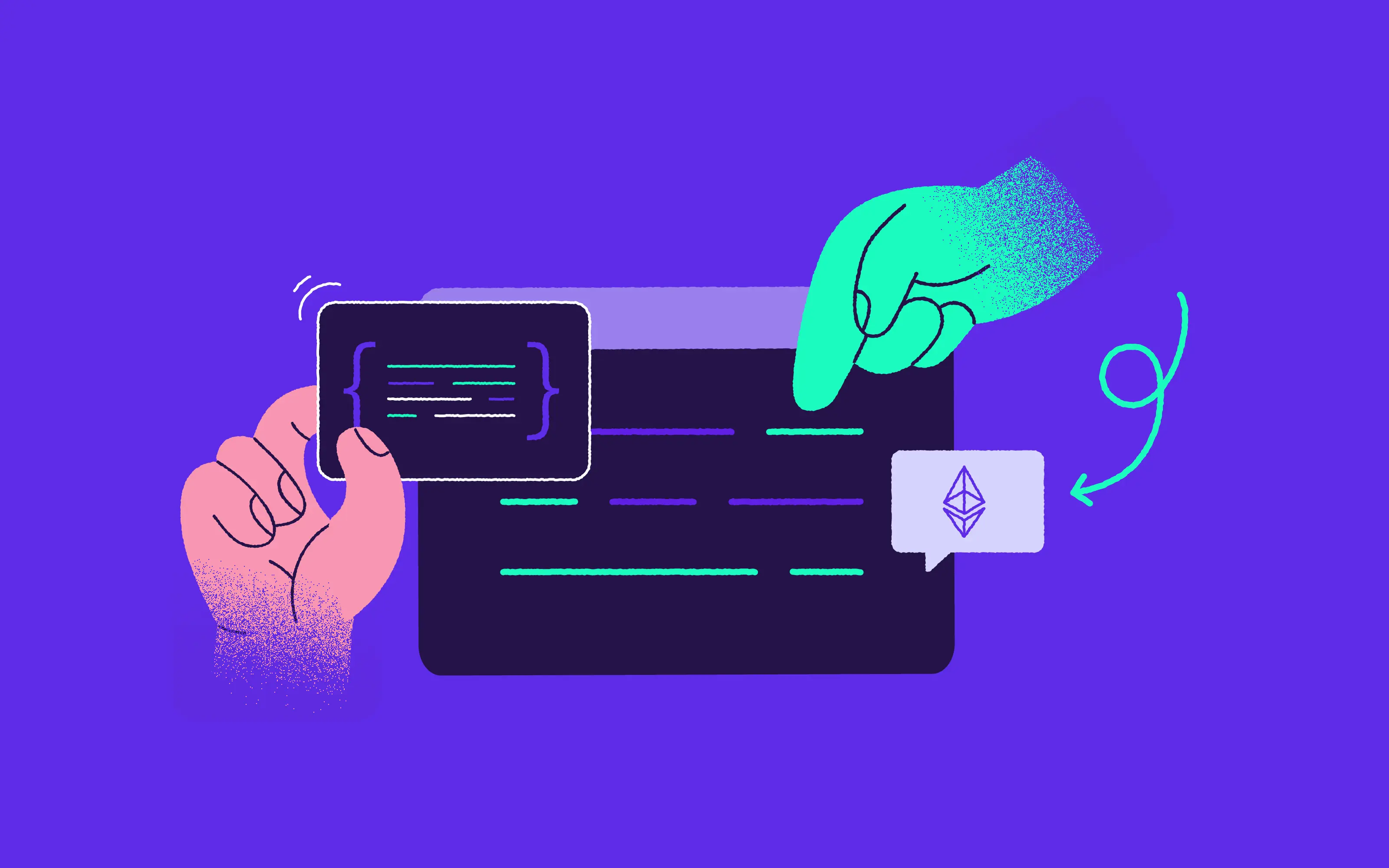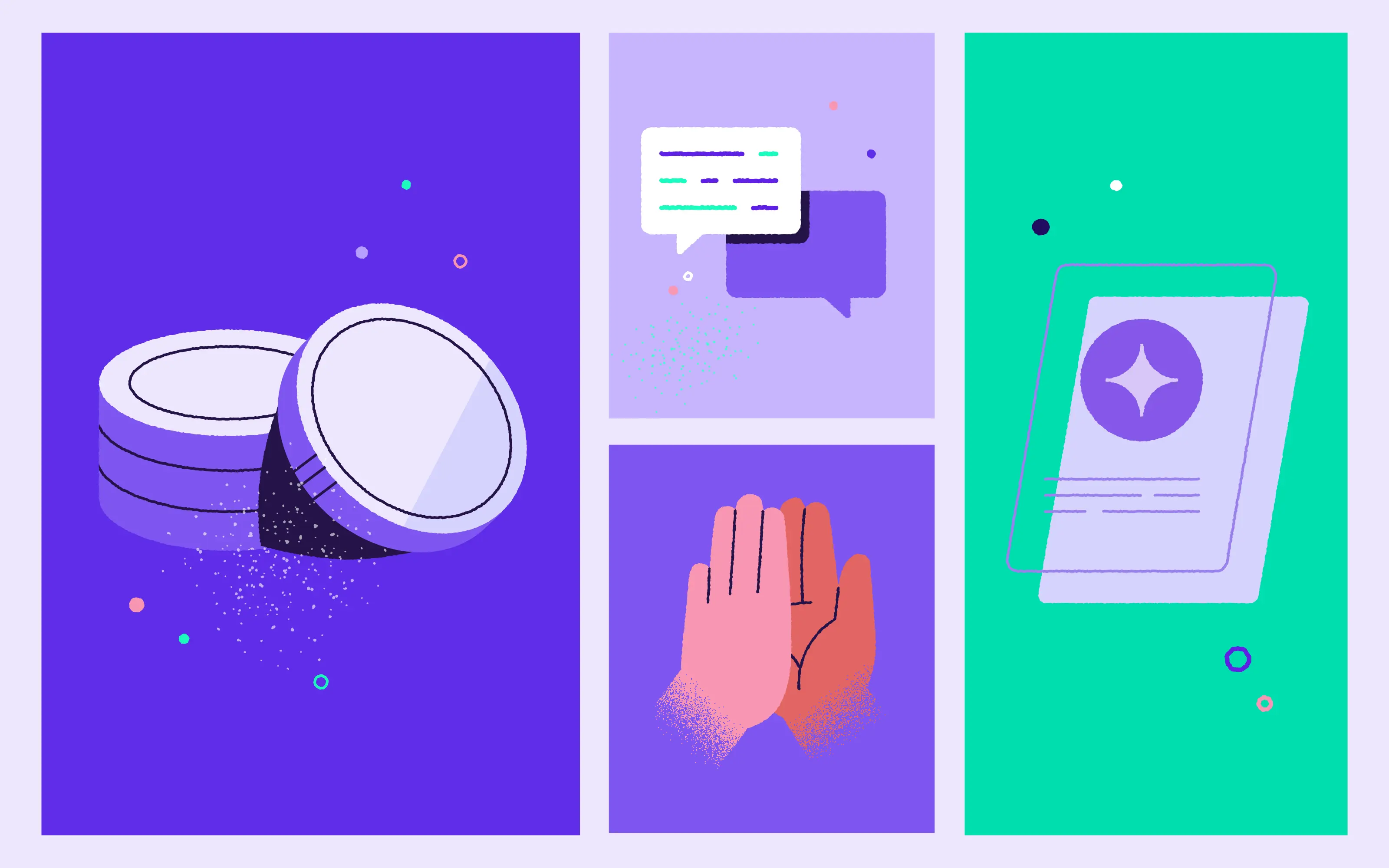
We’re proud of the fact that 10Clouds is the largest blockchain software development house in Europe. We have more than 30 blockchain and DeFi projects under our belt and a unique team of developers who are skilled specifically in this type of project. We’ve worked, among other projects, on Earnity, a Silicon-valley, community-based crypto platform, and Aleph Zero, a new privacy blockchain. But we’re invested in continuously improving our knowledge and expertise in the field, which is why we’ve built a DeFi Developer Roadmap.
What is the 10Clouds DeFi Developer Roadmap?
To ensure that we are all keeping up with the latest developments in DeFi, and delivering outstanding service to customers, we decided to develop a knowledge roadmap using Roadmap.sh. Below, we wanted to walk you through some of its key features. These are the areas that every 10Clouds blockchain developer is skilled up in before becoming an autonomous owner or contributor to DeFi client projects.
1. Understanding the basics of Crypto and Blockchain Technology
We cover the difference between Proof of Work Vs Proof of Stake, give an introduction to hashing and Merkle Tree, and explore the fundamentals of cryptography in blockchain technology. We walk our team members through all of the basics that they’ll need to cover before progressing onto more in-depth DeFi knowledge.
2. Wallets and DApps
We describe wallet types and what a wallet actually is - unlike a regular wallet this is a tool for signing transactions. We compare wallet safety and usability, depending on user needs. We delve into the details of hardware wallets, which are used for holding assets safely, and Gnosis safe - a wallet for multiple owners of a single address. We also cover Metamask, walletConnect, and Relay - all of which support interaction with Web3 apps and DApps.
3. An In-Depth Understanding of Networks and Smart Contract Development
In this part of the roadmap, we want to make sure that all participants understand the differences between blockchain networks and the process of smart contract development.
We cover the mainnets used for different protocols, test networks for testing smart contracts, faucets for obtaining testnet tokens, network forking for local testing, and bridging assets between different networks.
4. An Overview of Development Tools and Blockchain Development Best Practices
Here, we cover the Hardhat, Foundry, and Brownie frameworks which allow for development, compilation, tests, mainnet forking, and other features. We introduce the team to tools for writing simple tests, checking their coverage, and interacting with deployed contracts.
We also explore security tools for auditing contracts and frontend tools for developing Web3 apps. Additionally, we highlight the best blockchain development tools and practices for efficient and secure development.
5. The Ethereum Pipeline and Cryptographic Techniques
In this section, we cover the Ethereum Virtual Machine (EVM) fundamentals, deployment, ABI, and interaction with deployed contracts. We explain the role of a HTTP provider as a gateway to interaction with the blockchain. We also share a glossary of important terms related to development on the Ethereum pipeline. Additionally, we delve into cryptographic techniques used in blockchain development, such as encryption and digital signatures.
6. A Deep-Dive into Solidity and Smart Contract Language
We offer a comprehensive guide through the most important constructs of the Solidity language, the primary language for smart contract development. As Solidity is unusual, we also distinguish a few additional constructs, such as communication types and assembly practices. We cover advanced Solidity topics such as inheritance, modifiers, and libraries.
7. ERCs and Token Standards
We explain the standards for tokens, which are actually applications that run on the blockchain. We also cover regular tokens, non-fungible tokens (NFTs), and objects that can be the same in defined amounts (items). We touch on popular ERC add-ons, extending their functionalities, and the importance of token standards in the DeFi ecosystem.
8. Library Goodies and Smart Contract Security
Here, we explore the various defined and audited libraries which extend smart contract functionalities and improve security. We cover ownership and access management, as well as the prevention of re-entrancy attacks. We also explain how to build governance using the smart contracts of so-called DAO applications - making use of existing libraries. Additionally, we emphasize best practices for smart contract security.
9. The Overall DeFi Ecosystem and Blockchain Applications
Here we give an overview of the entire ecosystem, which includes:
- The side protocols which create it
- IPFS for storing data
- The Ethereum Name Service (ENS), as well as domain name service (DNS) for Web3
- Chainlink - a tool which makes blockchain talk to the external world
- The graph - tool for interacting with contracts from regular applications
- Automation tools for scheduled contract interactions
- Dune analytics - an effective representation of blockchain data using diagrams
10. Swaps and Decentralized Exchanges
This learning block is all about understanding the fundamentals of swaps on the blockchain, including the differences between decentralized and centralized exchanges. We also cover risks and how to prevent them and touch on practices for earning on DEXes. Finally, we talk about the most popular protocols and the differences between them, such as Uniswap, SushiSwap, and PancakeSwap.
11. Borrowing and Lending on Blockchain
Here we cover the fundamentals of loans on the blockchain, the risks involved, and the extensions of blockchain loans vs traditional ones. We also take a deep dive into some popular protocols for loans, such as Aave, Compound, and MakerDAO, and explore different borrowing and lending strategies.
12. Yield Optimizers and DeFi Strategies
Yield optimization is all about getting higher revenue through diversifying investments among multiple protocols, including swaps and loans. We cover the meaning of terms such as liquidity mining and annual percentage yield (APY). We also delve into popular protocols and their functionalities, such as Yearn Finance, Curve, and Harvest Finance. Additionally, we explore different DeFi strategies and their risks.
We never stop learning! Continuously evolving with the blockchain industry
This is definitely not the end of the DeFi Developer Roadmap. We are constantly observing the state of the blockchain market, and we’re on the hunt for new, disruptive ideas. We’re watching the blockchain protocol for scalability and interoperability, including technologies like Layer 2 solutions and cross-chain bridges.
We’re also in the process of learning the Rust programming language, which is gaining popularity in blockchain development, and imparting this learning throughout the team. Stay updated with the latest tools, techniques, and trends in blockchain and DeFi development by following our roadmap. Watch this space for future updates and insights!
Does it sound like the perfect workplace for you?
Join our team by applying to one of our job ads or just send us your CV. Who knows, we might be looking for someone with your skillset right now.



